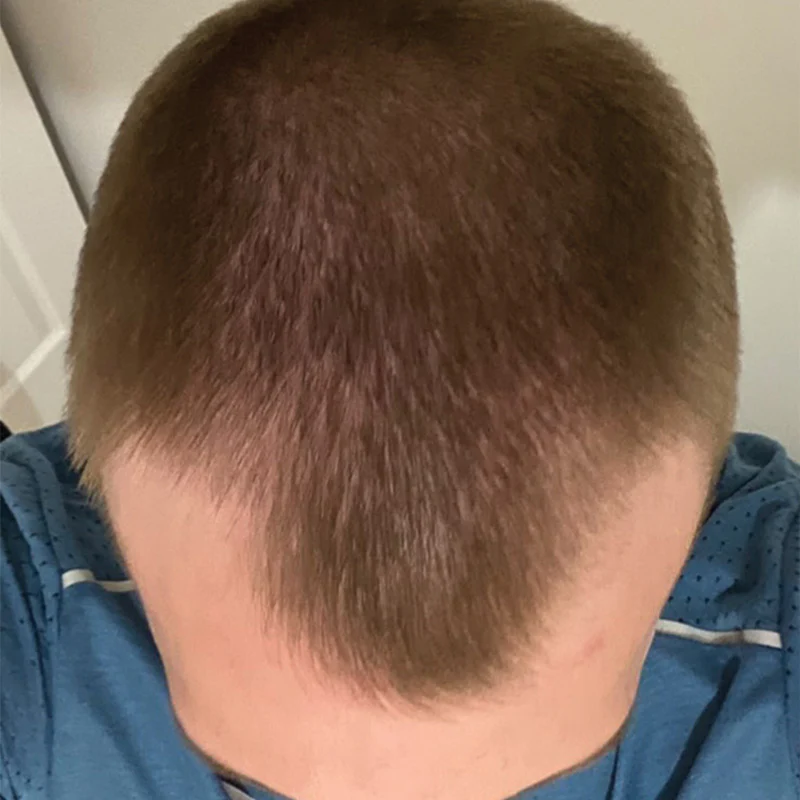Understanding DHT: Essential Insights on Male Hair Loss

Noticing a retreating hairline or thinning crown? You’re not alone, and it’s not just in your head. Hair loss is a reality for many men at some point in their lives. In fact, by their early 30s, most men in Ireland will have already observed noticeable changes in their hair density.
But what’s the root cause?
One common term you’ll encounter in the realm of male pattern baldness is DHT, a hormone frequently blamed for hair loss in men. But what exactly does it do? Why are some individuals more affected than others? Crucially, what steps can be taken to address this issue?
This article delves into the science of DHT, its relation to hair loss, and the modern treatments available for those seeking to take action.
What Is DHT?
DHT, or dihydrotestosterone, is a hormone integral to the development of male traits during puberty, such as facial hair, a deepened voice, and muscle growth. It forms when the enzyme 5-alpha-reductase converts testosterone into DHT.
While vital in early life, DHT can have adverse effects as we age, particularly impacting hair follicles in specific scalp areas like the crown and frontal hairline. For those genetically inclined towards male pattern baldness (androgenetic alopecia), DHT becomes a significant adversary.
How DHT Triggers Hair Loss
Hair grows through cycles: a growth phase (anagen), a transition phase (catagen), and a rest/shedding phase (telogen). DHT disrupts this process by binding with hair follicle receptors, gradually shrinking them.
This process, called miniaturization, leads to finer, shorter hairs over time until hair stops growing entirely from affected follicles.
Genetics largely dictates your level of susceptibility. If hair loss was prevalent in your father or grandfather, you might be predisposed to the same fate.
Recognizing DHT-Driven Hair Loss
Most men experience hair loss in a predictable manner:
- A receding hairline (especially around the temples)
- Thinning at the crown
- More pronounced scalp visibility along part lines
This type of hair loss can begin in your late teens or early twenties, but for many men in Ireland, it becomes noticeable between their late twenties and early thirties.
Importantly, DHT doesn’t affect the entire scalp but targets specific genetically susceptible areas. As a result, baldness often appears on the top of the head, while the sides and back remain relatively untouched.
What Are Your Options?
The good news is despite genetics, you can alter how your body responds to DHT. Treatments are now available that specifically target this hormone, slowing hair loss and sometimes even prompting regrowth.
A primary strategy involves lowering DHT levels in the scalp. Oral DHT blockers, obtainable by prescription, are commonly used for this purpose. These treatments address the hormonal cause rather than just masking the issue.
One approach is finasteride, which works by stopping the conversion of testosterone to DHT. This clinically supported option is favored by men across Ireland aiming to maintain their hair and regain control over their appearance.
Is It Safe?
As with any medical treatment, DHT blockers can have side effects, though they are typically rare and reversible. Some men may experience reduced libido or hormonal symptoms, but for many, the benefits substantially outweigh the risks.
Consulting a doctor or specialist before starting any new regimen is vital. Fortunately, services like Sons have simplified this process for Irish men, offering online consultations and discreet home delivery of tailored hair loss solutions.
When Will You See Results?
Hair growth takes time, so patience is necessary. Most men notice decreased shedding within three months of consistent treatment use. By six months, you may observe visible changes in hair density and volume.
The full benefits often manifest around the 12-month mark, and with continued treatment, results generally last. Halting treatment typically results in resuming hair loss where it previously left off.
Thus, managing expectations is as crucial as managing your treatment. This is a long-term commitment that has proven effective for many men when adhered to correctly.
Supplementary Strategies
While tackling DHT is essential, a holistic approach further boosts outcomes. Consider these lifestyle tips to complement your treatment:
- Maintain a nutrient-rich diet with foods high in zinc, vitamin D, and biotin.
- Engage in regular physical activity to help balance hormone levels.
- Prioritize quality sleep to aid cellular repair and growth.
- Minimize stress, as chronic stress can exacerbate hair loss through mechanisms like telogen effluvium.
While these actions won’t block DHT alone, they foster healthier hair growth and may enhance treatment responses.
The Importance of Early Intervention
Understanding DHT and hair loss reveals that timing is critical. Acting early increases the likelihood of retaining existing hair and supporting regrowth where possible.
Waiting too long until follicles are extensively damaged or inactive can limit treatment efficacy. If signs of hair loss are noticeable, don’t ignore them. Early intervention provides more options.
Closing Thoughts
DHT poses a challenge, but it’s manageable. With the right mix of scientific understanding, consistent treatment, and expert advice, many men succeed in halting hair loss and even reversing it.
Thanks to heightened awareness and easier access to medical remedies, men across Ireland need not silently accept hair loss as unavoidable.
From Galway to Belfast, seeking help is now simpler than ever. Visit Sons to explore your options and take the initial step towards regaining both your hair and confidence.
Understanding the science behind hair loss is the first stride in addressing it.